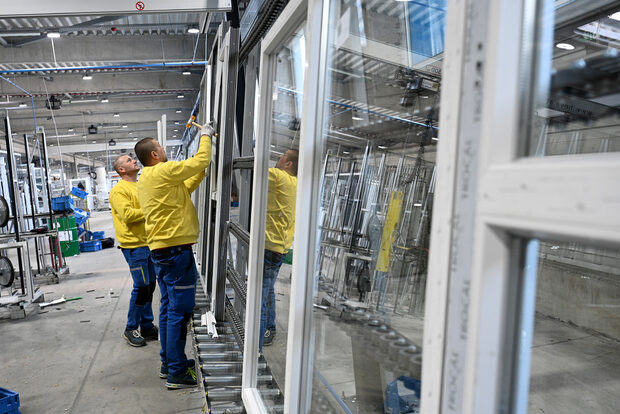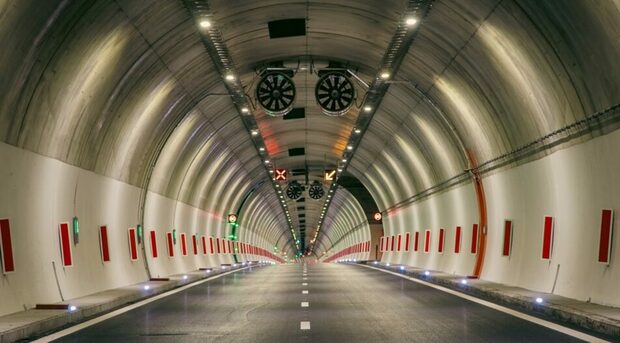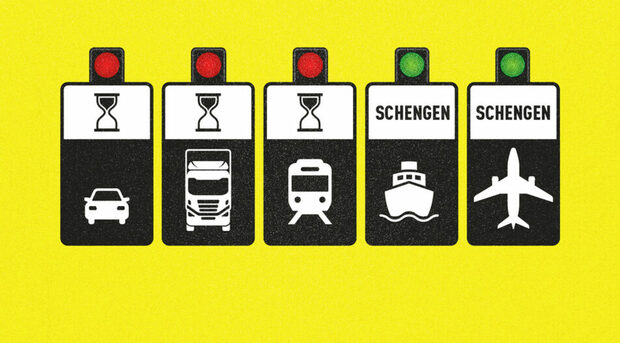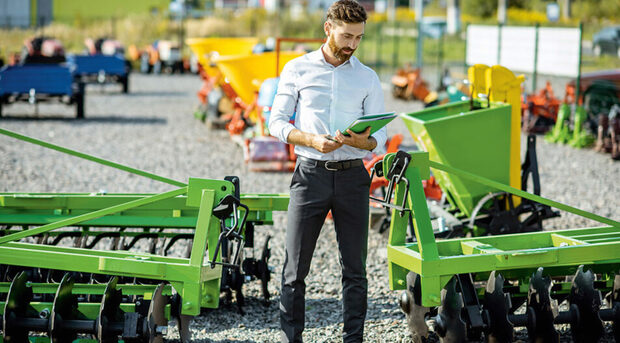Bulgaria, better known for its yoghurt and hardly associated with the aircraft industry, already has a second manufacturer of airplane equipment on its soil. France's Latecoere opened a manufacturing facility near Plovdiv in May that will supply the aircraft giant Airbus with various details for its planes' door assemblies. Latecoere followed U.S.-owned Woodward which put Bulgaria on the map of the global aircraft industry in 2016.
The arrival of Latecoere is yet another example that high added-value industries are taking a larger share in growing Bulgarian exports, bringing added value and faster economic development. Exports rose to over 52 bn levs last year, close to 53% of the country's GDP. Ten years ago, the share of exports was around 42% of GDP. At the same time, exports of capital goods have also continued to expand, reaching over a quarter of the total value of exports in 2017. Exports of finished products, machinery, equipment and parts contributed 13.5 bn levs.
Last year, Bulgaria's overall export growth reached 11%, whereas exports of investment goods rose by 20%. Though a positive piece of news, the impressive rate of growth also brings up the question of how long it can be maintained. Ever-rising labor shortages are making some manufacturers freeze their investment plans, while others are already reaching full production capacity.
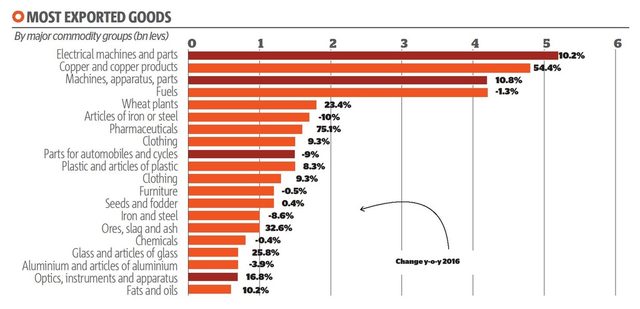
Changing lanes
Exports of capital goods have been growing steadily since 2012 at the expense of commodities and energy products. Their contribution to the overall rise in exports was 4.7 percentage points in 2017, according to data from the Bulgarian National Bank. The machines and parts thereof were the main export driver, as sales abroad of that group expanded by close to 12% last year, according to national statistics.
It should be noted that manufacturing in Bulgaria is mainly part of the bigger European export value chains. Since Germany is Bulgaria's biggest trade partner, its booming economy has a significant contribution to the success of Bulgarian exporters. The EU's biggest economy expanded by 2.2% last year, and though forecasts say its growth will be slowing down, it will remain robust in 2018 as well.
One of the rising stars in Bulgaria's manufacturing industry is the production of automobile components and parts. Represented by around 140 enterprises, the sector employs close to 40 thousand people.
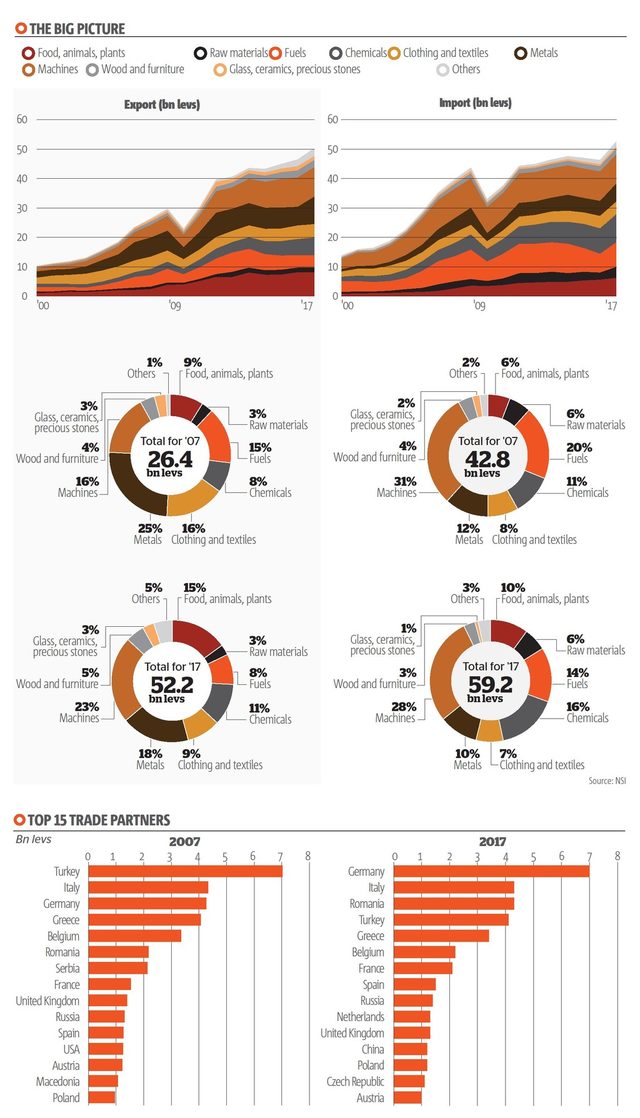
"The business model of production plants for automobile parts seems unstable in the long run. The reason is that some of them bet on low-cost labor, whereas wages will continue to grow," says Desislava Nikolova of Sofia-based Institute for Market Economics (IME). According to Ms Nikolova, there are projects which cannot even be started, because the companies behind them are unable to find cheap labor force.
"There will be no investors coming here for low-productivity, labor-intensive manufacturing any more. The enterprises working with low-cost labor and low wages will be gradually replaced by others willing to use the available workers more efficiently," said Latchezar Bogdanov of Industry Watch, a Sofia-based economic think-tank.
That said, the business community remains optimistic. According to a report published earlier this year by Automotive Cluster Bulgaria, a local NGO, 85% of manufacturers of automobile components in Bulgaria plan to continue expanding production in the country.
On the rise
Another factor for the impressive performance of Bulgarian exports last year was the rise in the global prices of major commodities. Though their contribution is falling, commodities and primary materials remain a significant part of Bulgaria's sales abroad and the volatility in the prices of food, metals and oil is affecting the total value of exports. Copper, for example, saw a price hike of close to 20% last year, which drove exports of copper and copper products - the second largest commodity group in Bulgaria's exports, through the roof with a nominal growth rate of 50%. Quantity-wise the increase was about 23% compared to 2016. A planned 50-day upkeep at copper smelter Aurubis Bulgaria in 2016 additionally lowered the comparison base for 2017.

Arms and ammunition also contributed to the rise in exports. Export data of Bulgaria's arms industry is carefully hidden in the national statistics behind the enigmatic tag "Special combined nomenclature codes". The export sales of that group rose to 1.8 bn levs last year, an increase of close to one third.
"Another boost came from the positive development of the global economy. The macroeconomic indicators are good, employment is growing, which brings in more consumption," says Mr Bogdanov. According to him, another stimulus has come from the foreign and Bulgarian investments in export-oriented production during the past few years. Without fresh investments, however, the sector will exhaust its potential, as the limits of production capacities and labor shortages are already showing.
"The current high rates of growth cannot be sustained without new investments," Mr Bogdanov opines. "We have already made the most of what we have."
Bulgaria, better known for its yoghurt and hardly associated with the aircraft industry, already has a second manufacturer of airplane equipment on its soil. France's Latecoere opened a manufacturing facility near Plovdiv in May that will supply the aircraft giant Airbus with various details for its planes' door assemblies. Latecoere followed U.S.-owned Woodward which put Bulgaria on the map of the global aircraft industry in 2016.
The arrival of Latecoere is yet another example that high added-value industries are taking a larger share in growing Bulgarian exports, bringing added value and faster economic development. Exports rose to over 52 bn levs last year, close to 53% of the country's GDP. Ten years ago, the share of exports was around 42% of GDP. At the same time, exports of capital goods have also continued to expand, reaching over a quarter of the total value of exports in 2017. Exports of finished products, machinery, equipment and parts contributed 13.5 bn levs.









